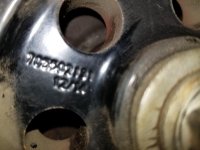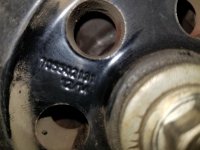Roadster Renovations
New member
This could very well be a big part of the problem, I put a torque wrench on my bolt and got about an 1/8th of an inch turn before it hit the factory torque setting. My nephew is a supervisor at a machine shop so he's helping me out with the bolt, getting it drilled for the safety wire that I plan on using.:doorag:
Could it be possible that the sloppiness of the sprocket fit is breaking the bolt tension? Could be a combination. I don't think that the bolt would loosen up without play in the splines.


